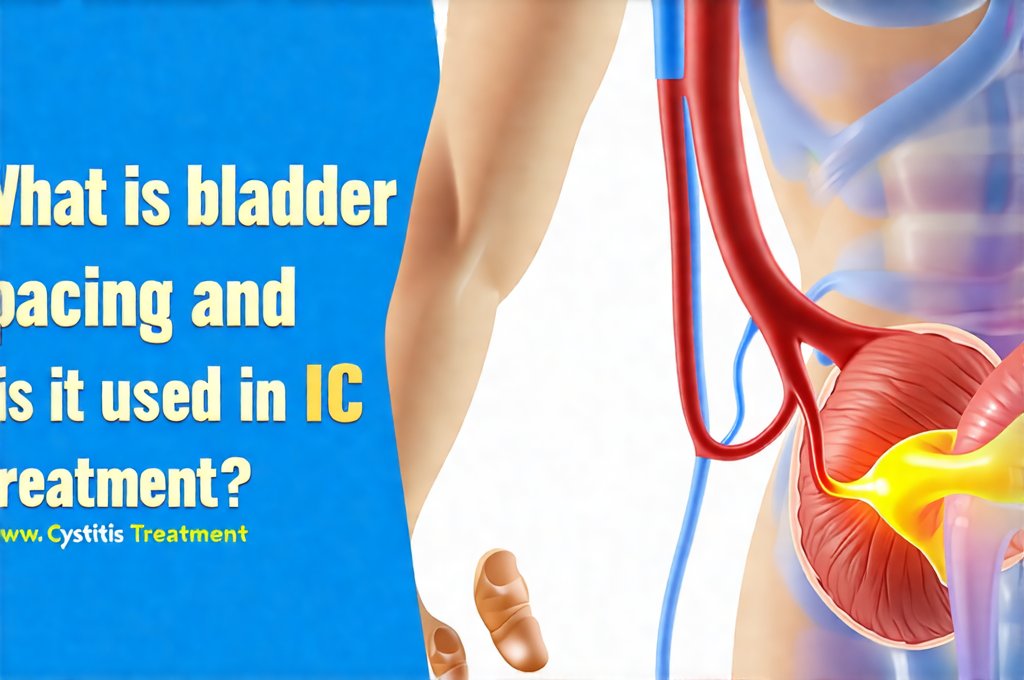Bladder pacing, also known as sacral neuromodulation (SNM) or InterStim therapy, is a reversible treatment option gaining recognition for certain bladder control problems. It’s often considered when more conservative methods like medication and lifestyle changes haven’t provided sufficient relief. The underlying principle revolves around modulating the nerves that control the bladder and bowel, aiming to restore a natural pattern of urination and/or defecation. While initially developed for urinary retention, its application has broadened over time, particularly in addressing urgency-frequency syndrome – a hallmark symptom of many chronic conditions impacting pelvic health. This approach differs significantly from simply managing symptoms; it attempts to address the neurological miscommunication causing bladder dysfunction.
The allure of bladder pacing lies in its potential to offer long-term relief without ongoing medication or invasive surgery. It’s crucial, however, to understand that SNM isn’t a cure-all and is best suited for carefully selected patients who meet specific criteria. The process involves a trial period to assess effectiveness before committing to permanent implantation. This testing phase allows clinicians to determine if neuromodulation offers meaningful improvement in bladder control symptoms before proceeding with a more definitive solution. Furthermore, SNM isn’t typically the first line of defense for interstitial cystitis/bladder pain syndrome (IC/BPS), but it’s increasingly being explored as part of a comprehensive treatment plan when other approaches fall short. Understanding specific gravity in urinalysis and why it matters can also help with diagnostics.
Understanding Sacral Neuromodulation
Sacral neuromodulation works by delivering mild electrical pulses to the sacral nerves, which are located in the lower back and control bladder and bowel function. These nerves act as a communication link between the brain and the organs responsible for urination and defecation. In cases of bladder dysfunction, this communication can become disrupted, leading to symptoms like urgency, frequency, incontinence, and retention. The electrical pulses from SNM aim to “reset” these nerve pathways, restoring more normal signaling. The system consists of three main components: a small implantable pulse generator (IPG), a lead containing electrodes, and an external programmer used by both the patient and clinician.
The implantation process is typically minimally invasive, involving a small incision in the buttock to place the lead near the sacral nerves. The IPG, which houses the battery and circuitry, is usually implanted under the skin in the upper buttock or abdomen. Following surgical placement, the system is programmed by a healthcare professional to deliver customized electrical stimulation tailored to the individual patient’s needs. Adjustments can be made over time as symptoms change or evolve. It’s important to note that SNM doesn’t directly “cure” the underlying cause of bladder dysfunction; it manages the symptoms by modulating nerve activity. You may also want to explore what is qavg in uroflowmetry and what does it indicate? for more diagnostic information.
The effectiveness of SNM relies on careful patient selection and a thorough evaluation process. Not everyone will respond positively, and identifying appropriate candidates is crucial for successful outcomes. Factors like the nature of the bladder problem, previous treatments tried, and overall health play a role in determining suitability. Patients often undergo a test phase using an external stimulator to assess their response before considering permanent implantation. This trial period helps predict whether SNM will provide meaningful symptom relief.
Bladder Pacing and IC/BPS Treatment
Interstitial cystitis/bladder pain syndrome (IC/BPS) is a chronic condition characterized by bladder pain, urinary frequency, and urgency. It’s a complex disorder with no single known cause, making treatment challenging. While there’s no cure for IC/BPS, various approaches aim to manage symptoms and improve quality of life. Traditionally, treatments have included medications (like pentosan polysulfate sodium or amitriptyline), bladder instillations, pelvic floor physical therapy, lifestyle modifications, and in some cases, surgery. However, a significant percentage of patients don’t find adequate relief from these conventional methods.
This is where sacral neuromodulation has begun to emerge as a potential adjunct therapy. Although IC/BPS isn’t primarily considered a neurological condition, the chronic pain and inflammation associated with it can lead to altered nerve signaling in the pelvic region. SNM may help modulate this abnormal nerve activity, reducing bladder urgency, frequency, and potentially even some aspects of pain. However, it’s essential to emphasize that SNM is not typically a first-line treatment for IC/BPS. It’s generally reserved for patients who have failed multiple other therapies and continue to experience debilitating symptoms.
The rationale behind using SNM in IC/BPS stems from the understanding that chronic pain can sensitize the nervous system, leading to heightened sensitivity and amplification of bladder signals. By modulating the sacral nerves, SNM aims to dampen these amplified signals and restore a more balanced neurological state. Research on SNM for IC/BPS is still evolving, but some studies have shown promising results in select patients, indicating improved urinary symptoms and pain levels.
Assessing Candidacy for SNM in IC/BPS
Determining whether an IC/BPS patient is suitable for sacral neuromodulation requires a comprehensive evaluation process. This typically involves:
– Detailed medical history: Including previous treatments tried, symptom severity, and impact on quality of life.
– Physical examination: To rule out other potential causes of urinary symptoms.
– Urodynamic testing: Assessing bladder function and capacity.
– Trial period with an external stimulator: This is a crucial step to determine if SNM offers any symptomatic relief before considering permanent implantation. The trial typically lasts several days to weeks, allowing the patient to experience the effects of neuromodulation in their daily life.
Patients who demonstrate a positive response during the trial phase – meaning they experience a significant reduction in urgency, frequency, or pain – are more likely to benefit from permanent SNM implantation. However, even with a successful trial, it’s important to have realistic expectations. SNM doesn’t eliminate IC/BPS; it manages symptoms and can improve quality of life for some patients. Not all patients will respond, and the degree of improvement varies considerably. It is also important to understand what is intermittent flow in uroflowmetry and what does it mean? during evaluations.
The SNM Trial Phase: What to Expect
The initial test phase with an external stimulator is designed to mimic the effects of a permanently implanted system, but without surgery. A temporary lead is placed near the sacral nerves through a minimally invasive procedure, typically done in an outpatient setting. This lead is connected to a small, portable device worn outside the body that delivers electrical stimulation. Patients are instructed on how to adjust the stimulation settings within prescribed parameters and maintain a symptom diary to track their response.
During the trial period, patients continue with their regular activities while monitoring their bladder symptoms. They may notice improvements in urgency, frequency, or pain over several days or weeks. If significant improvement is observed, it suggests that SNM could be beneficial. If there’s little or no change, it indicates that SNM is unlikely to provide substantial relief and permanent implantation shouldn’t proceed. The trial phase also allows clinicians to fine-tune the stimulation parameters to optimize effectiveness.
Long-Term Management with SNM
If a patient responds favorably to the trial period, they may be considered for permanent implantation of the IPG and lead system. This is typically performed as an outpatient procedure under local anesthesia. Once implanted, the device requires regular follow-up appointments with a healthcare professional for programming adjustments and battery checks. The battery life of the IPG varies depending on stimulation settings but generally lasts several years. When the battery needs replacing, it’s a relatively simple surgical procedure to replace the generator.
Ongoing management involves monitoring symptoms and adjusting stimulation parameters as needed. Patients are also encouraged to continue with other IC/BPS treatments, such as pelvic floor therapy or lifestyle modifications, to maximize their overall well-being. While SNM can significantly improve quality of life for some patients, it’s essential to remember that it’s just one component of a comprehensive treatment plan. Regular communication with your healthcare team is crucial to ensure optimal outcomes and address any concerns or challenges that may arise. Consider keeping a bladder diary and how to use it for accurate tracking.





















